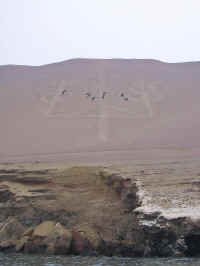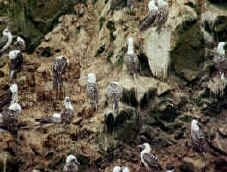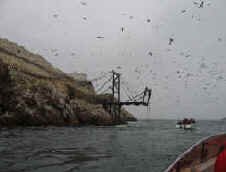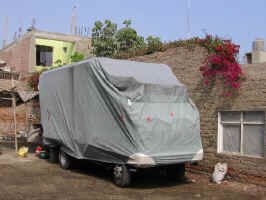|
June 12-15, 2006 - Coastal Peru north to Lima We arrived in Nazca yesterday, late afternoon. We found a spot to camp at a hotel across from the airport. The hotel had very nice grounds and a large grassy area for overlanders. We shared the area with an Italian couple driving a Land Rover with a rooftop tent. Since, we had a nice, clean, grassy area to work in, we decided to spend today housecleaning. We removed everything from our storage areas and used our compressor to blow the dust out of all the nooks and crannies. And boy, was there a lot of dust! Don also spent some time under the Fuso, just checking everything and tightening bolts here and there. After this expedition with its very rough roads, we are very pleased with the performance of the truck. Our next cleaning project will be a bath for the outside! The next morning, we set off bright and early for the town of Paracas. Along the way we stopped to visit the tiny village of Huacachina. This town is set around a lagoon in the middle of huge sand dunes. The setting is amazing and the sand dunes are huge! While we didn't partake, one of the main activities in town is to sandboard down the dunes. We were hoping to see others doing it, but everything was dead quiet when we arrived. After walking around the lagoon, we continued on our way, arriving in the town of Paracas mid afternoon. The town exists basically to service the needs of the fishermen who live there and the needs of the hordes of tourists who arrive daily to visit the Reserva Nacional de Paracas. The Reserve covers quite a large area, but most people come to take the boat tour to the Islas Ballestas. We will visit there tomorrow. But first we enjoyed a late lunch of fresh calamari and ceviche. Yum.
Once we reached the Islas Ballestas, we were treated to the sight of what had to be, hundreds of thousands of birds circling or sitting on the rocks. We saw Peruvian Pelicans, Peruvian Boobys, Red-legged Cormorants, Inca Terns and even a couple of Peruvian Penguins. We also saw a lot of sea lions frolicking in the water or laying on the rocks in the sun. The shear quantity of birds gave a new meaning to the term "bird rock". After returning to town, we climbed into the Fuso and went into the Reserve to relax for a day before we start packing up to head home. We'll be back in Peru at the end of September to complete our our exploration of South America, traveling through northern Peru, Ecuador and the Galapagos Islands, and finally Colombia. See you then. Here's a photo of our Fuso nicely wrapped up in its ADCO Products RV cover.
|




